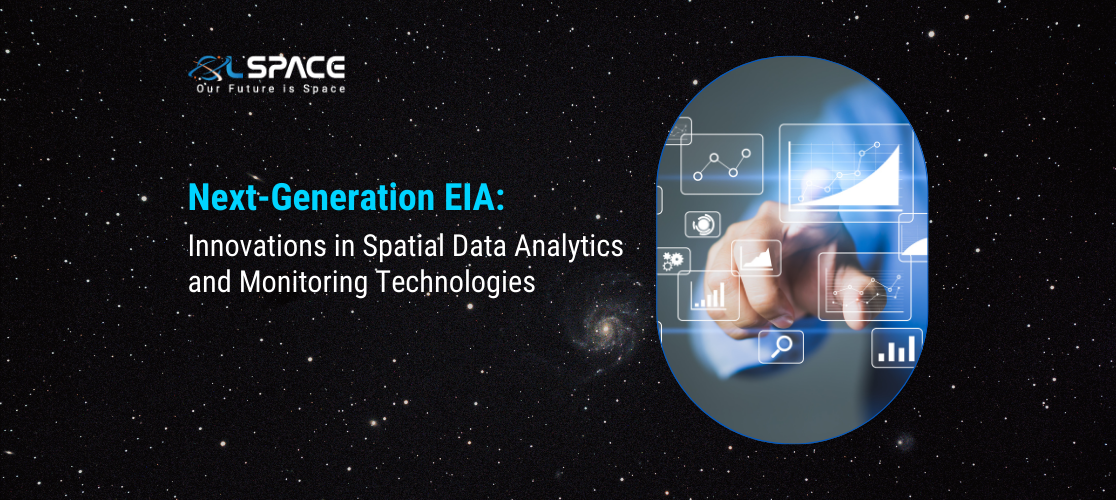28 February 2024
Next-Generation EIA: Innovations in Spatial Data Analytics and Monitoring Technologies

Environmental Impact Assessment (EIA) plays a crucial role in ensuring sustainable development by evaluating the potential environmental consequences of proposed projects. In recent years, advancements in spatial data analytics and monitoring technologies have transformed the way EIAs are conducted, offering unprecedented insights into environmental patterns and trends. This article explores the latest innovations in spatial data analytics and monitoring technologies that are shaping the next generation of EIAs.
Remote Sensing and Satellite Imagery:
Remote sensing technologies, including satellite imagery and aerial photography, provide valuable data for EIAs by capturing detailed information about land cover, vegetation, water bodies, and terrain features. High-resolution satellite imagery enables environmental consultants to assess the baseline conditions of project sites, identify sensitive habitats, and monitor changes over time.
LiDAR and 3D Terrain Modeling:
Light Detection and Ranging (LiDAR) technology facilitates the creation of highly accurate 3D terrain models, which are invaluable for assessing topographic features, landforms, and elevation variations. LiDAR data enables EIA practitioners to conduct visualisations, analyse slope stability, and predict the potential impacts of development activities on the surrounding landscape.
GIS and Spatial Analysis Tools:
Geographic Information Systems (GIS) software and spatial analysis tools allow environmental consultants to analyse complex datasets, overlay multiple layers of information, and identify spatial relationships and patterns. GIS-based spatial analysis enables EIAs to assess environmental risks, model scenarios, and make informed decisions about project design and mitigation measures.
Machine Learning and AI Algorithms:
Machine learning algorithms and artificial intelligence (AI) techniques are increasingly being applied to spatial data analysis in EIAs. These algorithms can process large volumes of data, identify patterns, and predict future trends with a high degree of accuracy. Machine learning models can assist in habitat classification, species distribution modeling, and predicting the potential impacts of climate change on ecosystems.
Crowdsourced Data and Citizen Science:
Crowdsourced data and citizen science initiatives engage local communities and stakeholders in data collection and monitoring efforts. Citizen science projects enable residents to contribute observations, photos, and other data relevant to EIAs, providing valuable insights into local environmental conditions and community concerns.
Real-Time Monitoring Technologies:
Advances in real-time monitoring technologies, such as sensor networks, IoT devices, and unmanned aerial vehicles (UAVs), enable continuous monitoring of environmental parameters and project activities. Real-time data streams allow EIAs to detect changes in air quality, water quality, noise levels, and other environmental indicators, facilitating early detection of potential impacts and timely intervention.
Visualisation and Data Communication:
Data visualisation techniques, such as interactive maps, 3D visualisations, and virtual reality (VR) simulations, enhance the communication of EIA findings to stakeholders and decision-makers. Visualisation tools help to translate complex spatial data into intuitive visual representations, enabling stakeholders to better understand potential environmental impacts and mitigation measures.
Predictive Modeling and Scenario Analysis:
Predictive modeling techniques, such as habitat suitability modeling and ecological niche modeling, enable EIAs to forecast the potential impacts of development projects on ecosystems and wildlife habitats. Scenario analysis tools allow environmental consultants to explore different development scenarios and assess their potential environmental consequences, helping to inform decision-making and risk management.
Open Data Initiatives and Collaboration:
Open data initiatives and collaboration among government agencies, research institutions, and non-profit organisations facilitate access to environmental data and promote data sharing and interoperability. By leveraging open data resources, EIAs can access a wealth of information for baseline assessments, impact analysis, and monitoring activities, enhancing the accuracy and reliability of EIA findings.
Continuous Improvement and Adaptation:
The field of EIA is continuously evolving, driven by technological advancements, regulatory changes, and emerging environmental challenges. Environmental consultants and EIA practitioners must stay informed about the latest innovations in spatial data analytics and monitoring technologies, adapt their methodologies accordingly, and continuously improve their practices to ensure the effectiveness and relevance of EIAs in addressing current and future environmental concerns.
Conclusion:
Next-generation EIAs are leveraging innovations in spatial data analytics and monitoring technologies to conduct more comprehensive, accurate, and insightful assessments of environmental impacts. By harnessing the power of remote sensing, GIS, machine learning, real-time monitoring, and visualisation tools, EIAs are better equipped to identify environmental risks, predict potential impacts, and inform decision-making processes. As technology continues to advance and environmental challenges evolve, the integration of spatial data analytics and monitoring technologies will play an increasingly important role in shaping the future of environmental impact assessment.
